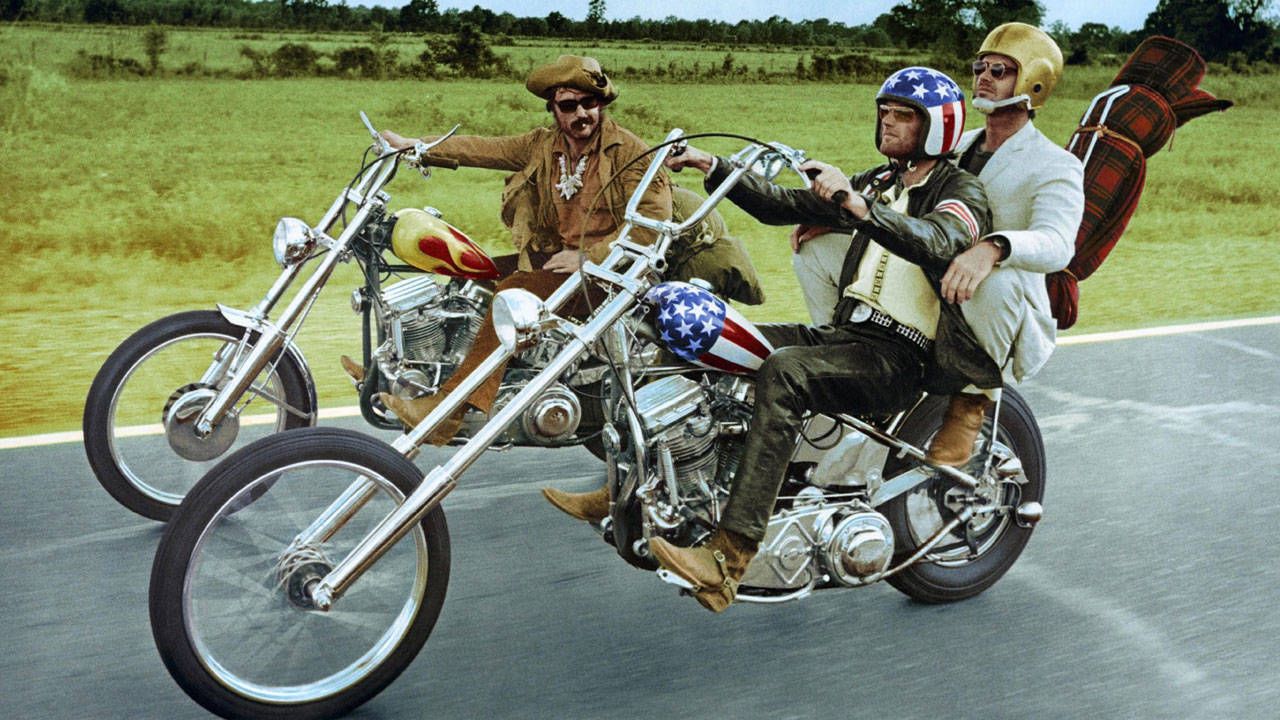
They even invented odd-ball characters like Miraculous Mutha who was the embodiment of the whore with a heart of gold. Soon, the team figured out that sex sells and made sure there was always a pretty girl seen with a custom motorcycle on the cover.Įasyriders had a definite and tweaked point of view, from the wonky “Takin’ It Easy” column of bizarre news stories and weird tid-bits, to mind-bending art direction and quirky cartoons. The first issue didn’t offer a biker chick on the cover, just a wild chop job. Just as Fonda and Hopper’s film Easy Rider acted as a microcosm of the hippie and biker culture, so Easyriders focused this crazy and rebellious lifestyle and defined it. In June of 1971, Easyriders magazine was unleashed on an unsuspecting public. It would turn out to be a winning combination of custom motorcycles and real bikers, seen by the public for the first time in a magazine devoted to the biker lifestyle. His idea was to do a magazine that captured the people behind the custom bikes as well as the wild lifestyle that surrounded them. Joe Teresi told me that motorcycle magazines of that time showcased bikes but not the people who built or rode them. Other early staff members included copy editor Frank Harding, and Louis Bosque along with assorted office cats and dogs. Along with these three Paisanos (hence the company’s name Paisano Publications), Don Pfeil signed on as editor-at-large and produced editorials capturing the passion of the chopper experience. Mil was also into cameras and acted as Easyriders first photo editor. Joe was the technical editor on Big Bike and along with bike builder and parts fabricator Mil Blair, designed many aftermarket parts for people who wanted to build a chopper of their own.

In the early ’70s, Joe Teresi had already logged over 100,000 miles on choppers and was known as a custom bike builder in his own right. The two-wheeled-trio wanted their new magazine to be completely different than any motorcycle magazine on the planet and succeeded with the irreverent and madcap format which became Easyriders magazine. Lou had been an editor of drag racing and men’s magazines, creating such titles as Drag Racing, Drag Strip, and Big Bike. Lou had been riding choppers since they were called bobbers and motorcycle clubs had names like the 13 Rebels, Galloping Gooses, and Deuces Wild. Gearheads Mil Blair and Joe Teresi teamed up with magazine editor Lou Kimzey to produce a lifestyle-driven magazine that would appeal to bikers. At the same time the Super Glide hit the streets, two biking friends from Minnesota that moved to southern California were poised to change two-wheeled history. The Super Glide marked the beginning of factory custom motorcycles by Harley and shows that the Motor Company was watching what custom bike builders were up to and trying to give consumers what they wanted. The bike was painted “Sparkling America” red, white and blue (perhaps as a tip of the hat to Easy Rider). Davidson married a Sportster front end to an FL frame and designed a fiberglass rear “boat-tail” fender. The 1971 Harley-Davidson models were pretty much the same as they were in 1970 save for the new Baja 100 trail bike and the FX Super Glide with its 74 cubic inch motor. It was the fastest speed any motorcycle-powered machine had ever attained up to that time. With a suped-up Sportster engine positioned right behind his head, Rayborn piloted the H-D streamliner down the salt setting a two-way record of 265.492 miles per hour.

On a cool, dry day in October 1970, Harley-Davidson and racer Cal Rayborn went to the salt flats of Bonneville near Wendover, Utah to prove that a single-engine Harley could break the absolute land speed record held previously by twin-engine machines. In 1971, the two-wheeled world was primed and ready for Easyriders magazine.Ī lot was going on in the motorcycle world at about this time. The early ’70’s have become known as the flower power years of sex, drugs, rock n’ roll, custom choppers, hot rods, disillusioned youth and rebellion. (If you’ve missed any of our Birth of Bikers series, click here to catch up.)

I wonder what happened to it?”-Jack Nicholson, Easy Rider “This used to be a helluva great country.


 0 kommentar(er)
0 kommentar(er)
